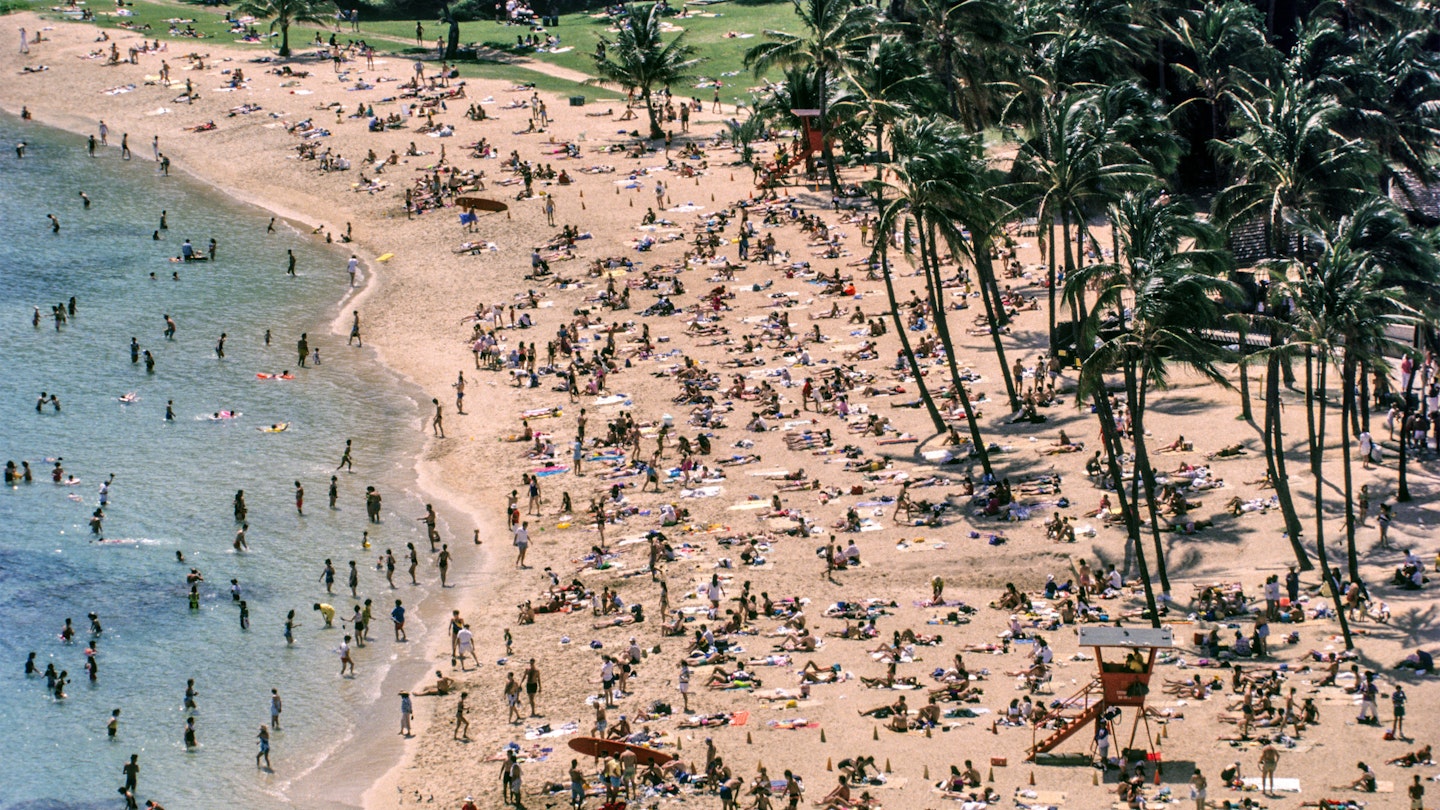Hawaii Faces Surge in Tourism
Hawaii has always been a go-to destination for travelers, and many Hawaiian residents are now facing an unprecedented increase in visitors. Since COVID-19 restrictions were lifted this spring, a remarkable rush of tourists has unsettled even the most seasoned locals.
The state’s tourism metrics indicate that Hawaii is on track to eclipse its 2019 figures, despite officially reopening only on July 8. Since the elimination of quarantine, Hawaii has welcomed nearly 200,000 new tourists, all vying to experience its stunning landscapes and vibrant culture.
However, these rising numbers have introduced numerous challenges such as traffic congestion, escalating waste issues, and a critical shortage of transportation resources. A significant lack of rental vehicles has even compelled some tourists to use U-Hauls for local travel. Consequently, Hawaiian government leaders and tourism boards are striving to address the challenges of overtourism, which experts anticipate won’t stabilize until 2022.
Kalani Kaʻanāanā, chief brand officer of the Hawaii Tourism Authority, articulated the need for sustainable tourism: “We’re working toward more mindful and, ultimately, regenerative tourism where visitors take the time to know each island, local culture, and community,” he explained in an email. “As tourism begins to recover, we encourage travelers to travel respectfully to enhance their overall experiences.”
Increasing Fees for Out-of-State Tourists
One immediate measure has been the significant increase in entrance fees for out-of-state visitors at popular sites. For instance, the fee for accessing the stunning waters of Hanauma Nature Bay has escalated from $12 to $25. This hike is not intended to penalize tourists; rather, it aims to protect the natural environment. Conservation groups in Honolulu noted that during the nine-month shutdown, the region witnessed a restoration of wildlife and clearer waters.
Honolulu City Council Chairman Tommy Waters remarked, “We observed how profoundly Hanauma Bay benefitted during the pandemic. Our goal is to sustain this healing by limiting human impact, while also ensuring adequate resources for maintenance.”
Currently, Hanauma Bay is closed on Mondays and Tuesdays, limiting daily visitor counts to 1,000. Reservations are required for entry, aligning with sustainability goals.
Maui Mayor Requests Tourism Pause
In response to the spike in tourism, Maui County Mayor Michael Victorino has advocated for a temporary cessation of tourist arrivals. During discussions with airline executives, he expressed the need for a brief pause, emphasizing that Maui is a community first and a vacation destination second.
Despite these pleas, the surge in tourist traffic has proven difficult to curtail. In July, nearly 80,000 passengers arrived via United Airlines, while Hawaiian Airlines and Southwest Airlines followed closely behind.
New Shuttle Bus Service
In an effort to mitigate traffic congestion, a new shuttle bus service is being trialed. The initiative, supported by the Maui Visitors and Convention Bureau, operates from Kahului Airport to major resorts, aiming to alleviate the number of cars on the road. This two-week pilot program could potentially be extended if it proves successful in reducing travel-related strain.
The “Maui Aloha Shuttle” is set to operate three daily routes, providing cost-effective transportation options for visitors to explore the island without contributing to traffic issues.
Increased Law Enforcement on Hana Highway
The Hana Highway, a picturesque 64-mile stretch drawing tourists from around the globe, has faced exacerbated congestion amid soaring visitor numbers. This road is a vital thoroughfare for Maui residents, impacting their daily life due to high traffic volumes. In response, the Hawaii Department of Transportation has deployed approximately 70 “No Parking” signs along popular points, coupled with warnings about parking fines.
Mayor Victorino’s office reported that significant parking violations have already been addressed, with hundreds of citations issued to ensure safety and accessibility along this essential roadway.




